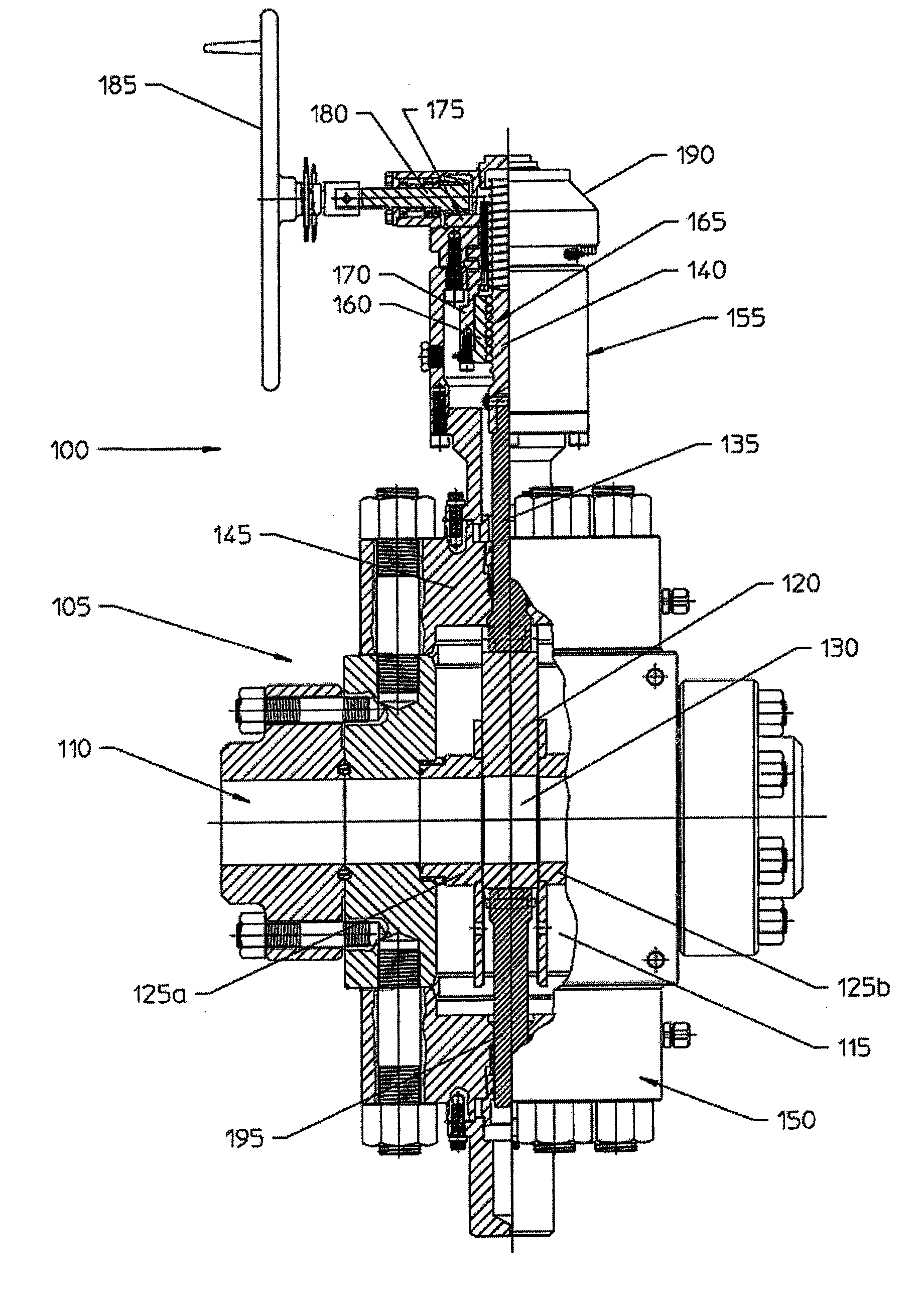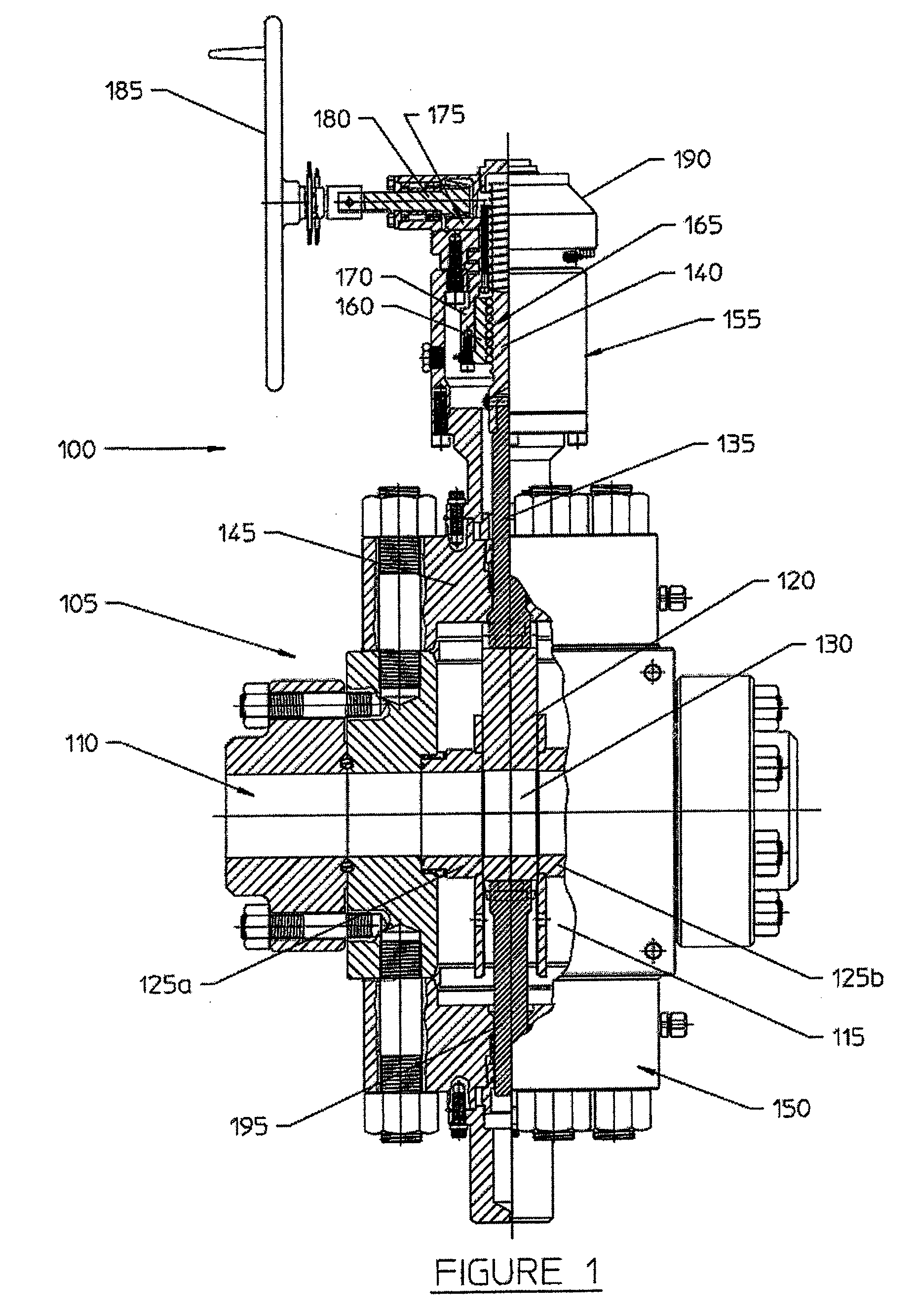Low Torque Gate Valve Mechanism
a low-torque, gate valve technology, applied in the direction of valve operating means/releasing devices, mechanical equipment, transportation and packaging, etc., can solve the problems of large rim pull force, large rim diameter handwheel, and inability to achieve acceptable rim pull force levels
- Summary
- Abstract
- Description
- Claims
- Application Information
AI Technical Summary
Benefits of technology
Problems solved by technology
Method used
Image
Examples
Embodiment Construction
[0016]The details of the present invention will now be described with reference to the figure. Referring to FIGS. 1 and 2, shown therein is a gate valve apparatus 100, in accordance with one embodiment of the present invention. A valve body 105 includes a flowway 110 extending completely therethrough. A valve body cavity 115 extends partially through valve body 105 and intersects the flowway 110. A seat 125a and a seat 125b are sealably disposed near the intersection of the flowway 110 and the valve body cavity 115. A bonnet 145 is secured and sealed to the valve body 105 over the valve body cavity 115. An actuator housing 155 is secured to the bonnet 145, and a gear set enclosure 190 is secured to the actuator housing 155.
[0017]A gate 120 is sealably and slidably disposed between seats 125a and 125b and is suitable for reciprocal motion between at least two positions such as an open position and a closed position. When the gate valve apparatus 100 is in an open position as shown in...
PUM
 Login to View More
Login to View More Abstract
Description
Claims
Application Information
 Login to View More
Login to View More - R&D
- Intellectual Property
- Life Sciences
- Materials
- Tech Scout
- Unparalleled Data Quality
- Higher Quality Content
- 60% Fewer Hallucinations
Browse by: Latest US Patents, China's latest patents, Technical Efficacy Thesaurus, Application Domain, Technology Topic, Popular Technical Reports.
© 2025 PatSnap. All rights reserved.Legal|Privacy policy|Modern Slavery Act Transparency Statement|Sitemap|About US| Contact US: help@patsnap.com



